NASA Space Tech, Science & Exploration Goals in 2015 in Pictures (Gallery)
NASA's FY 2015 Budget Proposal
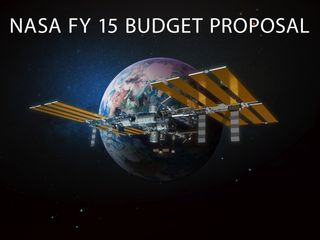
The President's Fiscal Year 2015 budget provides the necessary resources to advance the bipartisan space exploration plan agreed to by the Administration and Congress and ensure that the United States remains the world's leader in space exploration and scientific discovery for years to come.
Asteroid Initiative - NASA's 2015 Budget Proposal
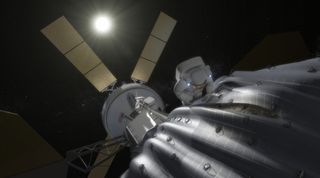
Game-changing technologies advanced by this budget support NASA’s first-ever mission to identify, capture and relocate an asteroid. Image released March 4, 2014.
International Space Station - NASA's 2015 Budget Proposal

The International Space Station remains the springboard to our next great leap in exploration. The Administration’s recent decision to extend the life of the International Space Station (ISS) until at least 2024 is essential to achieving the goals of sending humans to deep space destinations and returning benefits to humanity through research and technology development. Image released March 4, 2014.
Commercial Resupply Services to the ISS - NASA's 2015 Budget Proposal
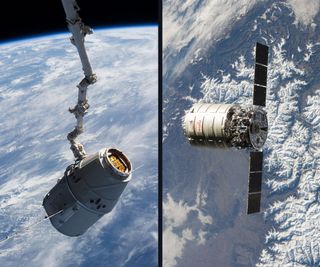
Our American industry partners for commericial resupply of the International Space Station, SpaceX and Orbital Sciences Corp., are developing new ways to reach space, creating jobs and enabling NASA to focus on new technologies that benefit all of our missions. Pictured here, the SpaceX Dragon (left) and Orbital's Cygnus (right) on resupply missions to the station. Image released March 4, 2014.
Commercial Crew - NASA's 2015 Budget Proposal
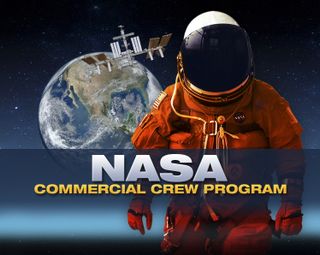
The budget further advances NASA’s initiative to return human spaceflight launches to the United States by 2017 in concert with three Commercial Crew Program, or CCP, partners. Image released March 4, 2014.
Orion and Space Launch System Orion and Space Launch System - NASA's 2015 Budget Proposal
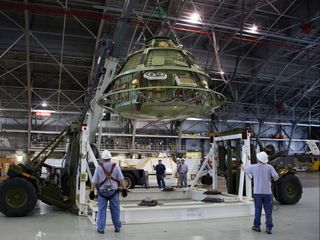
This budget keeps NASA’s deep space exploration program on track by funding the Space Launch System and Orion crew vehicle (seen here) to take astronauts farther into the solar system than we have ever gone before. In September 2014, NASA will conduct Orion's first trip to space, Exploration Flight Test–1. Image released March 4, 2014.
Planetary and Deep Space Missions - NASA's 2015 Budget Proposal
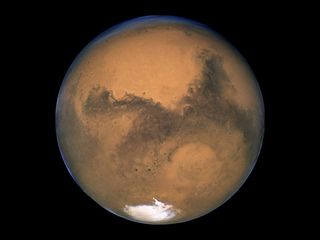
This budget supports and aligns NASA’s full spectrum of activities in order to meet the President’s challenge to send humans to an asteroid in 2025 and Mars in the 2030s. It continues NASA’s global leadership in planetary exploration, with funding for missions to Mars and Europa and 15 NASA missions already heading toward destinations such as Jupiter and Pluto and operating throughout the solar system. Image released March 4, 2014.
Get the Space.com Newsletter
Breaking space news, the latest updates on rocket launches, skywatching events and more!
Space Technology - NASA's 2015 Budget Proposal
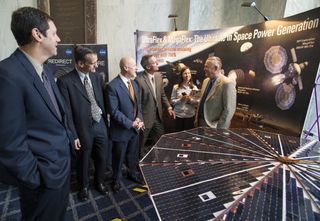
NASA's deep space exploration program, which will conduct seven in-space demonstrations this year, also drives the development of space technologies such as solar electric propulsion that will power tomorrow's missions and help improve life on Earth and augment NASA, and both federal government and private sector capabilities. Here NASA officials take part in NASA Tech Day On The Hill in July 2013 in Washington. Image released March 4, 2014.
Earth Science, Weather and Climate Change - NASA's 2015 Budget Proposal
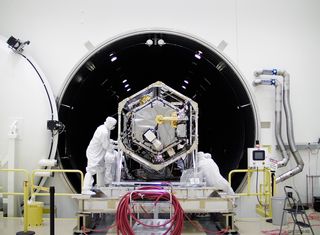
The budget sustains NASA’s vital role in helping us understand the Earth’s systems and climate and the dynamics between our planet and the sun. This year, NASA and its international partners will launch an unprecedented five Earth science missions to find answers to critical challenges facing our planet today and in the future, including climate change, sea level rise, freshwater resources and extreme weather events. Here, NASA's Orbiting Carbon Observatory spacecraft is moved into a thermal vacuum chamber at Orbital Sciences Corporation's Satellite Manufacturing Facility in Gilbert, Ariz., for environmental tests.
James Webb Space Telescope - NASA's 2015 Budget Proposal

NASA is conducting critical tests on the James Webb Space Telescope, the next Great Observatory. This year NASA will deliver the primary mirror backplane and backplane support to the Goddard Space Flight Center. The telescope's planned launch in 2018 will again revolutionize our understanding of the universe. Here, engineers route a cable for an acoustic test for one of the telescope's scientific instruments at NASA's Goddard Space Flight Center's cleanroom in Greenbelt, Md. Image released March 4., 2014.
Aeronautics - NASA's 2015 Budget Proposal
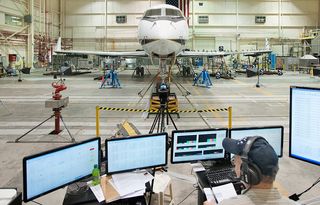
NASA’s aeronautics research focuses on substantially reducing fuel consumption, emissions and noise -- to make the Next Generation Air Transportation System, or NextGen, a reality. We also are tackling emerging global challenges facing aviation in the coming decades. Here NASA Dryden Flight Loads engineer William Lokos monitors a wing loading test of NASA G-III 804 during recent testing in support of the Adaptive Compliant Trailing Edge, or ACTE, project.
Join our Space Forums to keep talking space on the latest missions, night sky and more! And if you have a news tip, correction or comment, let us know at: community@space.com.

Space.com is the premier source of space exploration, innovation and astronomy news, chronicling (and celebrating) humanity's ongoing expansion across the final frontier. Originally founded in 1999, Space.com is, and always has been, the passion of writers and editors who are space fans and also trained journalists. Our current news team consists of Editor-in-Chief Tariq Malik; Editor Hanneke Weitering, Senior Space Writer Mike Wall; Senior Writer Meghan Bartels; Senior Writer Chelsea Gohd, Senior Writer Tereza Pultarova and Staff Writer Alexander Cox, focusing on e-commerce. Senior Producer Steve Spaleta oversees our space videos, with Diana Whitcroft as our Social Media Editor.
